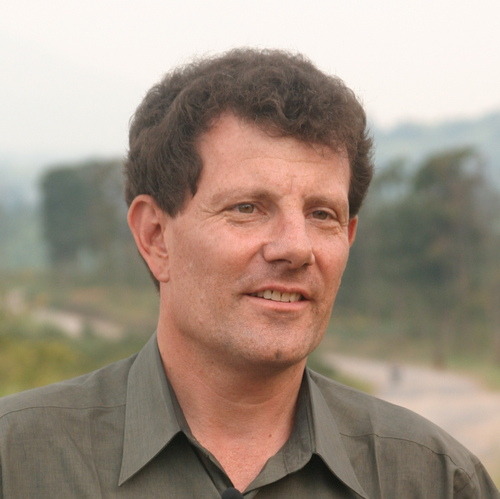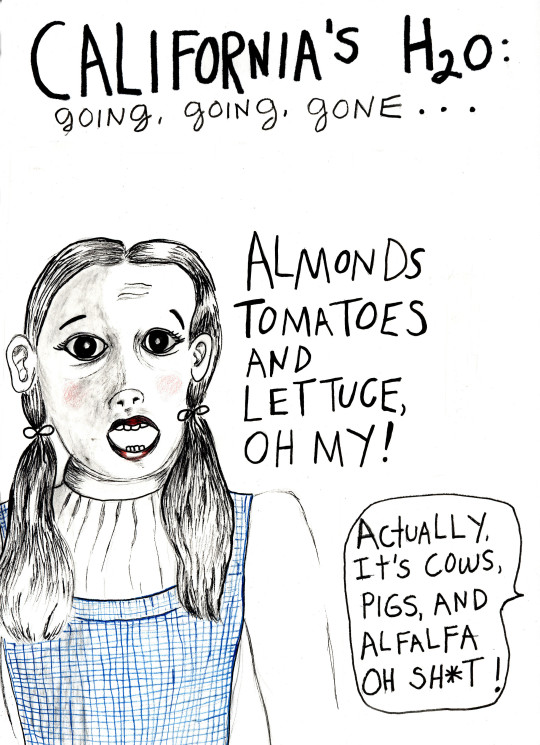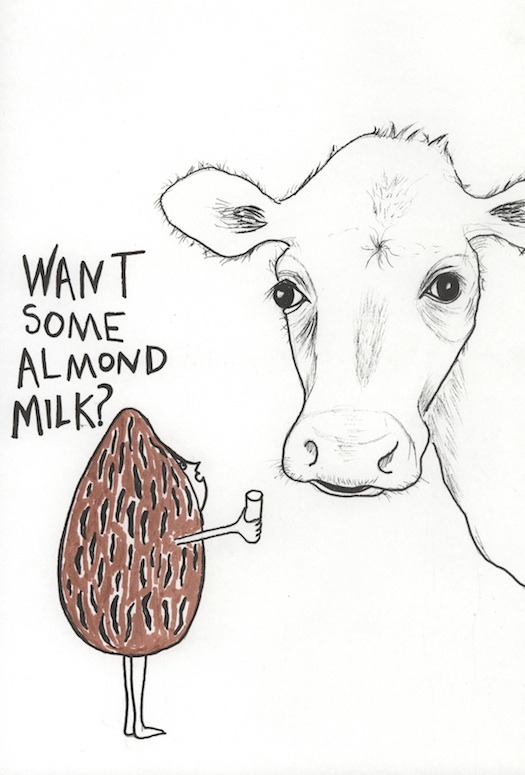
By Leslie Goldberg
In an amazing example of the difference between “talking the talk” and “walking the walk,” Nicholas Kristof, a New York Times columnist who has wrung his hands about the animal cruelty inherent in factory farming, turned his sights on the California drought and… and… and… can you believe it? Animal agriculture!
YAY! Finally somebody at the Gray Lady is going to tell the truth about water use in our state!
On your marks, get set, go, Nicholas!
He starts off strong with a quiz:
Which consumes the most water?
A) a 10-minute shower.
B) a handful of 10 almonds.
C) a quarterpound hamburger patty.
D) a washing machine load.
Yup, it’s the burger!! Ding, ding, ding.
The columnist explains carefully that the shower might use 25 gallons. The almonds? A gallon each. The washing machine uses 35 gallons per load. And the burger uses around 450 gallons.
He goes on to talk about the California drought and what a freaking bummer it is, especially when he and his daughter are out hiking and see how the streams and lakes are all dried up.
He even explains how meat, dairy and egg production stack up against plant foods in terms of water. He writes, “A mandarin orange consumes 14 gallons of water. A head of lettuce, 12 gallons. A bunch of grapes, 24 gallons. One single walnut, 2 gallons.”
In an impressive burst of truth-telling, he goes on to write: “… a single egg takes 53 gallons of water to produce. A pound of chicken, 468 gallons. A gallon of milk, 880 gallons. And a pound of beef, 1,800 gallons of water.”
Woo hoo! Go Nick, go. Tell it! Tell us all if we want to save the habitability of the planet we need to go vegan, now. Save the animals! Save the water! Strike a blow against climate change!
But as he comes into the home stretch, our hero Nicholas Kristof of the New York Times stumbles:
“Like most Americans, I eat meat, but it’s worth thinking hard about the inefficiency in that hamburger patty — and the small lake that has dried up to make it possible. Maybe our industrial agriculture system is beginning to change, for we’re seeing some signs of a food revolution in America, with greater emphasis on organic food and animal rights.”
Buy organic and give Walmart a big pat on the back as well for joining the “humane meat” bullshit brigade.
Think, baby, think.
Umm. I’m thinking if I should still keep reading the Times.
– A Vicious Vegan blog post –


